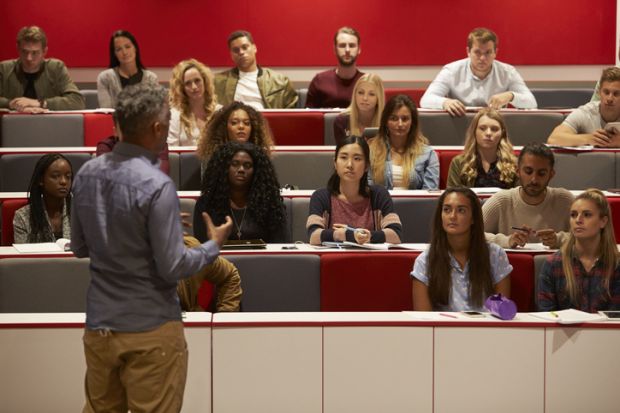Conversations about universities in 2020 have so far revolved largely around their financial viability and how they might be reordered after coronavirus.
But there is another equally important question to consider: how will universities engage with youth after the pandemic?
Right now, universities across the world might reflect carefully on an obvious but sometimes overlooked point: they are largely comprised of young people, who are facing almost unprecedented challenges in the aftermath of Covid-19.
Even before the pandemic, “youth”, in the sense of those born since the early 1990s, were confronting a set of converging crises: an inability to obtain secure work, the absence in many areas of inexpensive and high-quality education, growing disenchantment with formal politics, and gathering environmental threats.
Covid-19 has deepened these problems. In Australia, where I live, 10 per cent of young people under 20 have lost their jobs during the lockdown. The youth unemployment rate in Australia is twice that of the general rate.
The global picture is even more alarming. In India, 27 million 20-somethings lost work in April, and youth are disproportionately located in the informal economy worldwide. Unemployment and underemployment have knock-on effects in terms of nutrition, mental health, housing, social participation and access to services.
A substantial challenge for universities across the world in the 2020s will therefore be how they engage with a “Covid generation” who have seen their lives disproportionately disrupted by the pandemic.
One core principle should underpin all such efforts at engagement: young people must be treated not only as “future leaders” or “future change agents” but people already playing leadership roles: indeed, as people especially well-suited to be thinking about change.
Young people are particularly adept at reflecting on social transformation because they are so exposed to the hardships associated with the economic and social changes ushered in by Covid-19. In addition, they are less invested in the status quo, and therefore less inclined to respond to crisis simply by seeking to scramble back to a previous position. These ideas are encapsulated in the sociologist Karl Mannheim’s now classic work on generations and his argument that a cohort – generation – may have a type of “fresh contact” with its inherited setting.
There is a wealth of literature and reports on the active and creative role that young people have played in positive social change since the mid-1990s. We know from studies in Latin America, for instance, that youth have been quite effective at reconceptualising school curricula, and some Danish students have recently been rethinking university education. Young people have also rethought urban planning in places such as Spain and the US, and they are at the forefront of raising awareness about climate change, inequality and racism.
One thing has been striking about the pandemic response in many places around the world is that young people have demonstrated considerable innovation. They have helped to build district-level responses to the pandemic in India. They have run community awareness campaigns in Nigeria. They have led efforts to provide support to vulnerable youth in Australia.
Putting these observations alongside the previous points about youth hardship provides a basis for thinking about how universities might go about engaging with a generation of young people whose life maps are disintegrating.
They could redouble efforts to engage students in university planning processes, avoiding both tokenistic inclusion and the opposite risk of positioning youth as the only people whose voices count because they are experiencing processes firsthand. Universities could also enhance opportunities for students to obtain work placements, strengthen partnerships with organisations that are seeking to address youth hardship and even think about fundamental issues, such as food on campus. Why were subsidised canteens on campus, for instance, only a 1970s phenomenon?
These types of initiatives would not only help universities benefit from young people’s insights and energy. They would also make students feel that they are being invited to a process of discovery and transformation through their enrolment in a place of learning. Students would see that their university is eager to understand their generational needs and would feel invested in their institution’s development, too.
Many universities were already undertaking an enormous amount of work in these areas prior to Covid-19. But there’s a new urgency now. There’s a chance to engage more, and with an appreciation of how young people might be able to re-envision universities’ purpose and practices in ways consistent with a new situation.
Craig Jeffrey is director of the Australia India Institute and professor of geography at the University of Melbourne.




